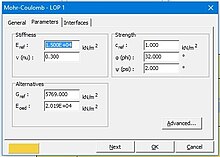
Computing is any goal-oriented activity requiring, benefiting from, or creating computing machinery. It includes the study and experimentation of algorithmic processes, and development of both hardware and software. Computing has scientific, engineering, mathematical, technological, and social aspects. Major computing disciplines include computer engineering, computer science, cybersecurity, data science, information systems, information technology, and software engineering.

Computer science is the study of computation, information, and automation. Computer science spans theoretical disciplines to applied disciplines. Though more often considered an academic discipline, computer science is closely related to computer programming.

Civil engineering is a professional engineering discipline that deals with the design, construction, and maintenance of the physical and naturally built environment, including public works such as roads, bridges, canals, dams, airports, sewage systems, pipelines, structural components of buildings, and railways.

Geotechnical engineering, also known as geotechnics, is the branch of civil engineering concerned with the engineering behavior of earth materials. It uses the principles of soil mechanics and rock mechanics to solve its engineering problems. It also relies on knowledge of geology, hydrology, geophysics, and other related sciences.

Computer-aided design (CAD) is the use of computers to aid in the creation, modification, analysis, or optimization of a design. This software is used to increase the productivity of the designer, improve the quality of design, improve communications through documentation, and to create a database for manufacturing. Designs made through CAD software help protect products and inventions when used in patent applications. CAD output is often in the form of electronic files for print, machining, or other manufacturing operations. The terms computer-aided drafting (CAD) and computer-aided design and drafting (CADD) are also used.
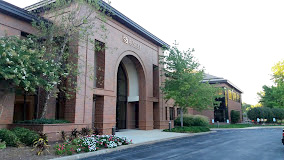
Bentley Systems, Incorporated is an American-based software development company that develops, manufactures, licenses, sells and supports computer software and services for the design, construction, and operation of infrastructure. The company's software serves the building, plant, civil, and geospatial markets in the areas of architecture, engineering, construction (AEC) and operations. Their software products are used to design, engineer, build, and operate large constructed assets such as roadways, railways, bridges, buildings, industrial plants, power plants, and utility networks. The company re-invests 20% of their revenues in research and development.
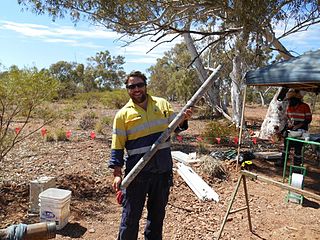
Engineering geology is the application of geology to engineering study for the purpose of assuring that the geological factors regarding the location, design, construction, operation and maintenance of engineering works are recognized and accounted for. Engineering geologists provide geological and geotechnical recommendations, analysis, and design associated with human development and various types of structures. The realm of the engineering geologist is essentially in the area of earth-structure interactions, or investigation of how the earth or earth processes impact human made structures and human activities.

Earthworks are engineering works created through the processing of parts of the earth's surface involving quantities of soil or unformed rock.
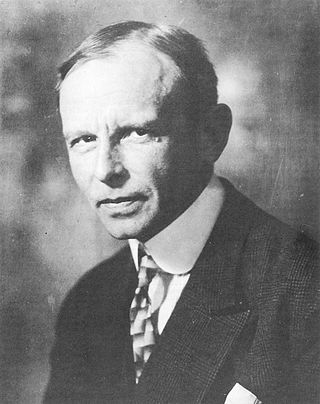
Karl von Terzaghi was an Austrian mechanical engineer, geotechnical engineer, and geologist known as the "father of soil mechanics and geotechnical engineering".

Nathan Mortimore Newmark was an American structural engineer and academic, who is widely considered one of the founding fathers of earthquake engineering. He was awarded the National Medal of Science for engineering.
The George E. Brown, Jr. Network for Earthquake Engineering Simulation (NEES) was created by the National Science Foundation (NSF) to improve infrastructure design and construction practices to prevent or minimize damage during an earthquake or tsunami. Its headquarters were at Purdue University in West Lafayette, Indiana as part of cooperative agreement #CMMI-0927178, and it ran from 2009 till 2014. The mission of NEES is to accelerate improvements in seismic design and performance by serving as a collaboratory for discovery and innovation.
Ralph Brazelton Peck was a civil engineer specializing in soil mechanics, the author and co-author of popular soil mechanics and foundation engineering text books, and Professor Emeritus of Civil Engineering at the University of Illinois Urbana-Champaign. In 1948, together with Karl von Terzaghi, Peck published the book Soil Mechanics in Engineering Practice, an influential geotechnical engineering text which continues to be regularly cited and is now in a third edition.
The Bridge Software Institute is headquartered at the University of Florida (UF) in Gainesville, Florida. It was established in January 2000 to oversee the development of bridge related software products at UF. Today, Bridge Software Institute products are used by engineers nationwide, both in state Departments of Transportation and leading private consulting firms. Bridge Software Institute software is also used for the analysis of bridges in various countries by engineers around the world.
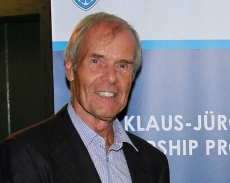
Klaus-Jürgen Bathe is a civil engineer, professor of mechanical engineering at the Massachusetts Institute of Technology, and founder of ADINA R&D, who specializes in computational mechanics. Bathe is considered to be one of the pioneers in the field of finite element analysis and its applications.
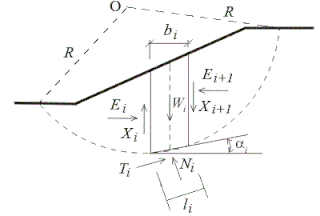
Slope stability analysis is a static or dynamic, analytical or empirical method to evaluate the stability of slopes of soil- and rock-fill dams, embankments, excavated slopes, and natural slopes in soil and rock. It is performed to assess the safe design of a human-made or natural slopes and the equilibrium conditions. Slope stability is the resistance of inclined surface to failure by sliding or collapsing. The main objectives of slope stability analysis are finding endangered areas, investigation of potential failure mechanisms, determination of the slope sensitivity to different triggering mechanisms, designing of optimal slopes with regard to safety, reliability and economics, and designing possible remedial measures, e.g. barriers and stabilization.
A finite element limit analysis (FELA) uses optimisation techniques to directly compute the upper or lower bound plastic collapse load for a mechanical system rather than time stepping to a collapse load, as might be undertaken with conventional non-linear finite element techniques. The problem may be formulated in either a kinematic or equilibrium form.
Geoprofessions is a term coined by the Geoprofessional Business Association to connote various technical disciplines that involve engineering, earth and environmental services applied to below-ground ("subsurface"), ground-surface, and ground-surface-connected conditions, structures, or formations. The principal disciplines include, as major categories:
A discontinuity in geotechnical engineering is a plane or surface that marks a change in physical or chemical characteristics in a soil or rock mass. A discontinuity can be, for example, a bedding, schistosity, foliation, joint, cleavage, fracture, fissure, crack, or fault plane. A division is made between mechanical and integral discontinuities. Discontinuities may occur multiple times with broadly the same mechanical characteristics in a discontinuity set, or may be a single discontinuity. A discontinuity makes a soil or rock mass anisotropic.

Geotechnical centrifuge modeling is a technique for testing physical scale models of geotechnical engineering systems such as natural and man-made slopes and earth retaining structures and building or bridge foundations.

David William Hight is a senior consultant at the Geotechnical Consulting Group, a company providing high-level expertise in the field of geotechnical engineering and well known for bridging the gap between research and engineering practice.
